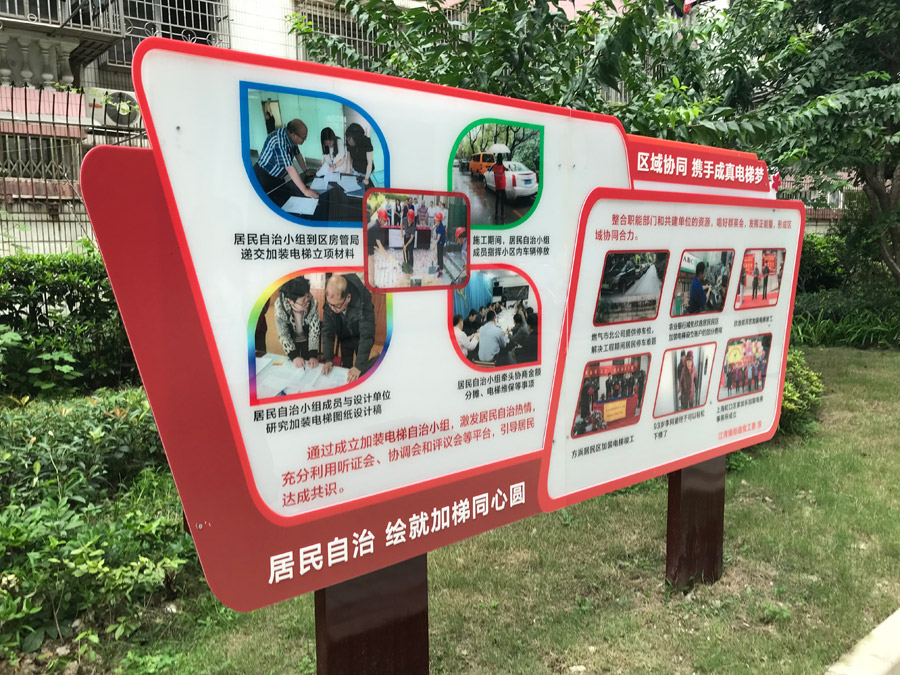Elevators make life easier for elderly


Cost sharing is another major issue open to disputes, Shi added.
According to the current policy, the government provides no more than 240,000 yuan for installing each elevator, which means the rest of the cost - around 260,000 to 460,000 yuan - should be covered by residents themselves.
It took the Nujiang Yuan building a year and almost 30 meetings attended by officials in the city and representative residents in the neighborhood to strike a consensus among all the 12 households living in the building.
They agreed that residents living on the higher floors paid more than those living on the lower ones and residents on the first floor needn't pay at all.
Such an agreement, however, has become a reference for future projects to follow.
Apart from interpersonal and economic obstacles, low government efficiency has also caused trouble.
According to Gong Jianhao, who proposed an elevator project in a building on Wenshui East road in Hongkou district, from putting it forward in 2013, he spent three years communicating with different government bureaus and departments.
"We only spent a few months on solving the problems with residents, but it took years negotiating with the government," said Gong. "I even went to the meteorological administration and the geology bureau to get permission."
The elevator was finally installed in February.
Recognizing the administrative barriers, the government, wanting to build a convenient city for the elderly, simplified the 46 official stamps needed for approval to 15 in 2016, and then set up the Jia Jia Le office to help residents.
"We are dedicated to providing guidelines and instructions, and to helping residents in need on related issues, such as introducing the elevator companies, or communicating with related bureaus, contractors, neighborhood committees and neighbors," Zhang said.
With the help of the agency, since its opening in Hongkou in March, five buildings in the district have had new elevators installed, three more are under construction and 19 are in preparation stages.
Like Hongkou, other districts across Shanghai have launched pilot projects in the past two years. Official data has shown that 12 elevators have been installed in multistory residential buildings, along with a total of 43 planned, as of last May.
For Zhang, the job of being a liaison for such projects has been fulfilling and rewarding.
There are not always headaches, but also heartwarming moments, she said.
"Most residents are really understanding and supportive, even those who live on the first floor," Zhang said.
She recalled Ye Niangen, a 60-year-old resident, from a recent project. Despite living on the first floor, Ye agreed to the project immediately because she used to be the daughter of an aged mother living in a building without elevators.
"I know the pain," Ye said.
Yu Ruyue contributed to this story.
























